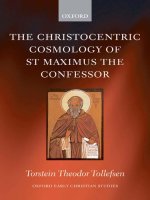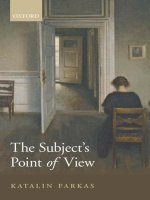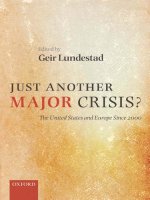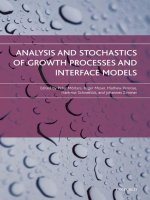methods approaches filang311 lesson1 oct 2008 (1)
Bạn đang xem bản rút gọn của tài liệu. Xem và tải ngay bản đầy đủ của tài liệu tại đây (243.56 KB, 29 trang )
METHODS AND APPROACHES
IN TEACHING ENGLISH AS A
FOREIGN LANGUAGE
October 6, 2008/ FIL ANG 311
Approaches, methods, procedures, and
techniques
Approach : this refers to “theories about the nature
of language and language learning that serve as the
source of practices and principles in language
teaching”. It offers a model of language
competence. An approach describes how people
acquire their knowledge of the language and makes
statements about conditions which will promote
successful language learning.
Method : a method is the practical realization of an
approach. Methods include various procedures and
techniques as part of their standard fare.
Procedure : a procedure is an ordered sequence of
techniques. A procedure is a sequence which can be
described in terms such as first you do this, then
you do that… Smaller than a method and bigger
than technique.
Technique : a common technique when using
video material is called “silent viewing”. This
is where the teacher plays the video with no
sound. Silent viewing is a single activity
rather than a sequence, and as such is a
technique rather than a whole procedure.
A term that is also used in discussions about
teaching is “model” – used to describe typical
procedures, usually for teachers in training.
Such models offer abstractions of these
procedures, designed to guide teaching
practice.
The Grammar – Translation
Method
This is a method that has been used by language
teachers for many years.
At one time it was called Classical Method,since it
was first used in the teaching of the classical
languages,Latin and Greek.
Earlier in this century,it was used for the purpose
of helping students read and appreciate foreign
language literature.
The Grammar – Translation Method
Classes are taught in the students ′ mother
tongue,with little active use of the target
language;
Vocabulary is taught in the form of isolated
word lists;
Elaborate explanations of grammar are
always provided;
Reading of difficult text is begun early in
the course of study;
Little attention is paid to the content of
text,which are treated as exercises in
grammatical analysis.
Audio-lingualism
Audio-lingual methodology owes its existence
to the Behaviourist models of learning using
the Stimulus-Response-Reinforcement model,
it attempted, through a continuous process of
such positive reinforcement, to engender
good habits in language learners.
Audio-lingualism relied heavily on drills like
substitution to form these habits.
Habit-forming drills have remained popular
among teachers and students, and teachers
who feel confident with the linguistic
restriction of such procedures
Presentation, Practice, and Production
A variation on Audio-lingualism in British-based
teaching and elsewhere is the procedure most
often referred to as PPP, which stands for
Presentation, Practice, and Production. In this
procedure the teacher introduces a situation
which contextualises the language to be taught.
The students now practice the language using
accurate reproduction techniques such as choral
repetition, individual repetition, and cueresponse drills
PPP and alternatives to PPP
The PPP procedure came under a sustained
attack in the 1990s.
Michael Lewis suggested that PPP was
inadequate because it reflected neither the
nature of language nor the nature of learning.
Jim Scrivener advanced what is perhaps the
most worrying aspect of PPP,the fact that it
only describes one kind of lesson;it is
inadequate as a general proposal concerning
approaches to language in the classroom.
In response to these criticism many people
have offered variations on PPP and alternative
to it: ARC, OHE/III, ESA.
ARC
put forward by Jim Scrivener
stands for Authentic use, Restricted use and
Clarification and focus
Communicative activity will demonstrate
authentic use; elicted dialogue or guided
writing will provoke restricted use of
language by students; finally clarification
language is that which the teacher and
students use to explain grammar,give
examples,analyse errors,elict or repeat
things.
OHE/III
Michael Lewis claims that students should be
allowed to Observe (read or listen to language)
which will then provoke them to Hypothesise
about how the language works before going on to
the Experiment on the basis of that hypothesis.
ESA
In the ESA model three components will
usually be present in any teaching
sequence,whether of five,fifty or a hundred
minutes
E stands for Engage - students have to be
engaged emotionally
S stands for Study
A stands for Activate - any stage at which
students are encouraged to use all and/or any
of the language they know
The Communicative Approach
The communicative approach or Communicative
Language Teaching (CLT) is the name which was
given to a set of beliefs which included not only a
re-examination of what aspects of language to
teach but also a shift in emphasis on how to
teach!
Non-communicative activities
activities
Communicative
No communicative desire
A desire to communicate
No communicative purpose
A communicative purpose
Form not content
Content not form
One language item only
Variety of language
Teacher intervention
No teacher intervention
Materials control
No materials control
The communication continuum
Task-based learning (TBL)
Popularised by prof. Prabhu, who speculated that
students were likely to learn language if they were
thinking about a non-linguistic problem.
Three basic stages of TBL according to Jane Willis:
1. Pre task (introduction to topic and task)
2. Task cycle (task, planning and report)
3. Language focus (analysis, practice).
Four methods
These methods developed in the 1970s and
1980s as humanistic approaches to remove
psychological barrieis to learning.
1. Community Language Learning
- students sitting in a ciricle
- a counsellor or a knower
- making the utterance
2. The Silent Way
- the teacher says as little
as possible
- interacting with physical
objects, especially with
Cuisenaire rods
- pointing to a phonemic chart
3. Suggestopaedia
Georgi Lozanov
physical surroundings and atmosphere of the
classroom are of a vital importance;
the reason for our inefficiency is that we set up
psychological barriers to learning: we fear that we will
be unable to perform, that we will be limited in our
ability to learn, that we will fail;
one result is that we do not use the full mental powers
that we have and according to Lozanov, we may be
using only 5 – 10% of our mental capacity
In order to make better use of our reserved capacity,
the limitations we think we have need to be
‘desuggested’
parent-children (teacher-student) relationship
three main parts: oral review, presentation and
discussion, concert session (listening to classic music)
Suggestopaedia
Desuggestopedia/suggestopedia, the
application of suggestion to pedagogy,
has been developed to help students
eliminate the feeling that they cannot be
successful or the negative association
they may have toward studying and,
thus, help them overcome the barriers to
learning.
One of the ways the students’ menatal
capacities are stimulated is through
integration of the fine arts.
Techniques
CLASSROOM SET-UP – the challenge for the teacher is
to create a classroom enivronment which is bright and
cheerful. (The teacher should try to provide as
positive environment as possible.)
PERIPHERAL LEARNING – this technique is based upon
that we percieve much more in our environment than
that to which we consciously attend. It is claimed
that, by putting poster containing grammatical
information about the target language on the
classroom walls, students will absorb the necessary
facts effortlessly.
POSITIVE SUGGESTION – it’s the teacher resposibility
to orchestrate the suggestive factors in a learning
situation, thereby helping students break down the
barriers to learning that they bring with them.
Teachers can do this through direct and indirect
means.
Techiques
BAROQUE MUSIC – it has a specific
rhythm and a pattern of 60 beats per
minute, and Lozanov believed it created
a level of relaxed concentration that
facilitated the intake and retention of
huge quantities of material.
4. Total Physical Response (TPR)
The originator of TPR, James Asher, worked
from the premise that adult second language
learning could have similar developmental
patterns to that of child acquisition.
Chlidren learn language from their speech
through the forms of commands, then adults
will learn best in that way too.
In responding to commands students get a
lot of comprehensible input, and in
performing physical actions they seem to
echo the claims of Neuro-linguistic
programming that certain people benefit
greatly from kinaesthetic activity.
Total Physical Response (TPR)
This method is developed to reduce stress people
feel while studying foreign languages. Learners
are allowed to speak when they are ready.
1. Using commands to direct behaviour
2. Role reversal
3. Action sequence
PRINCIPLES
1. The students' understanding of the target
language should be developed before speaking.
2. Students can initially learn one part of the
language rapidly by moving their bodies.
3. Feelings of success and low anxiety facilitate
learning.
4. Language learning is more effective when it is
fun.
5. Students are expected to make errors when they
first begin speaking. Teachers should be tolerant
of them. Work on the fine details of the language
should be postponed until students have become
somewhat proficient.
HUMANISTIC TEACHING
Humanistic teaching has found a greater acceptance at
the level of procedures and activities, in which students
are encouraged to make use of their own lives and
feelings in the classroom.
Such exercises have a long history and owe much to a
work from 1970s called Caring and Sharing in the Foreign
Language Classroom by Gertrude Moscowitz in which
many activities are designed to make students feel good
and remember happy times while, at the same time, they
practise grammar items.
When I was a child my favourite food was hamburger, or
When I was a child my favourite relative was my uncle. I
was shown how to crawl. I pushed out of my mother’s
womb.
THE LEXICAL APPROACH
The lexical approach, discussed by Dave
Willis and popularised by the writer Michael
Lewis is based on the assertion that
language doesn't consist of traditional
grammar and vocabulary, but also of
phrases, collocations, and idioms.
A lexical approach would steer us towards
the teaching of phrases which show words in
combination. Thus, instead of teaching will
for the future, we might instead have
students focus on its use in a series of
archetypical utterances such as I'll give you
a ring.









